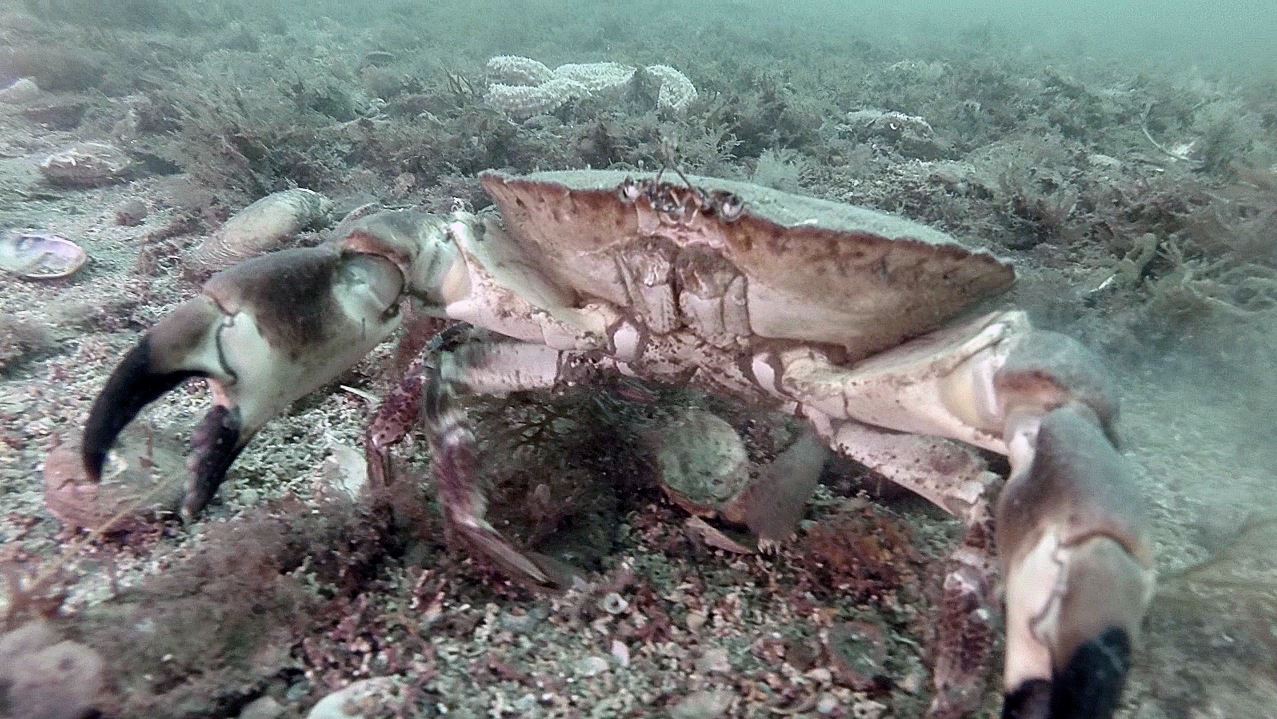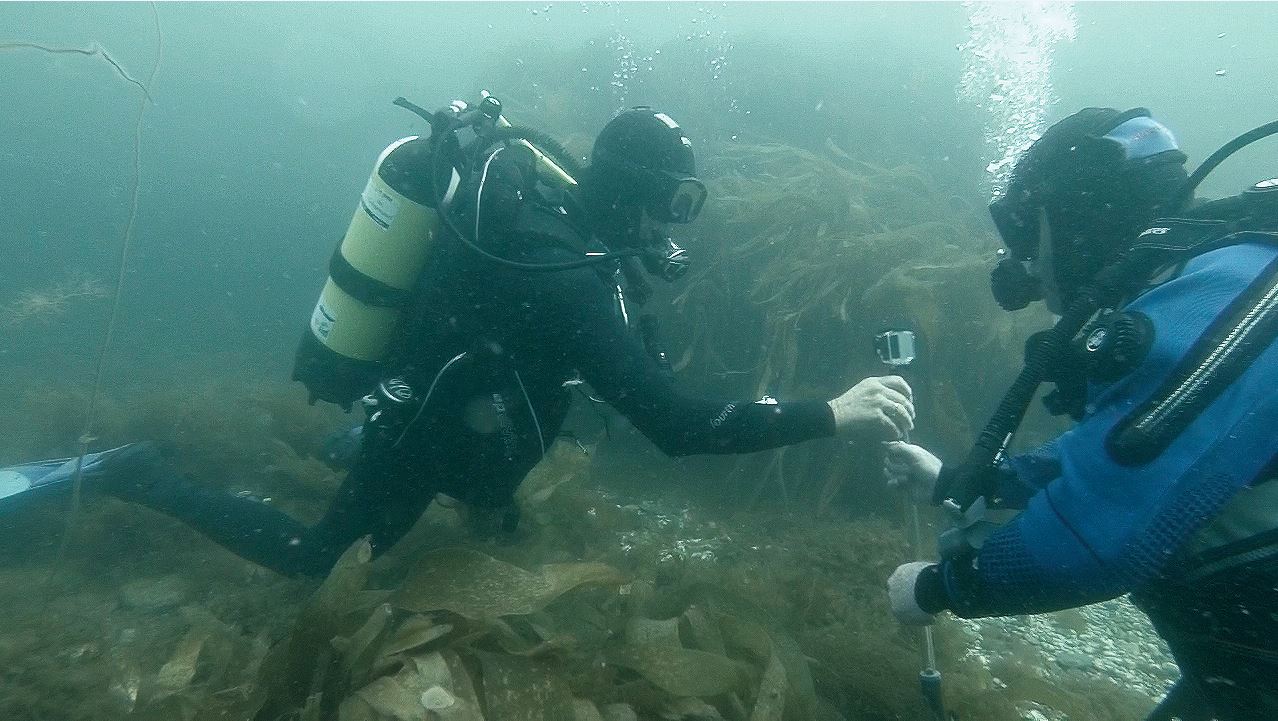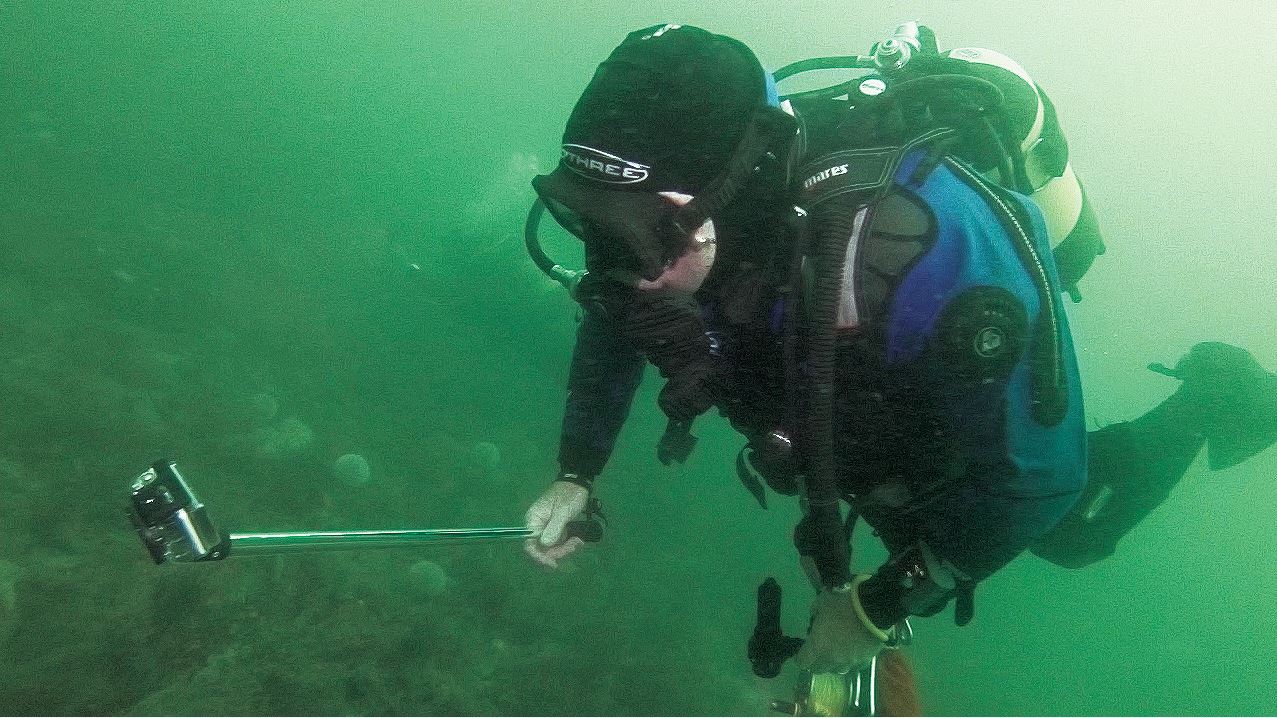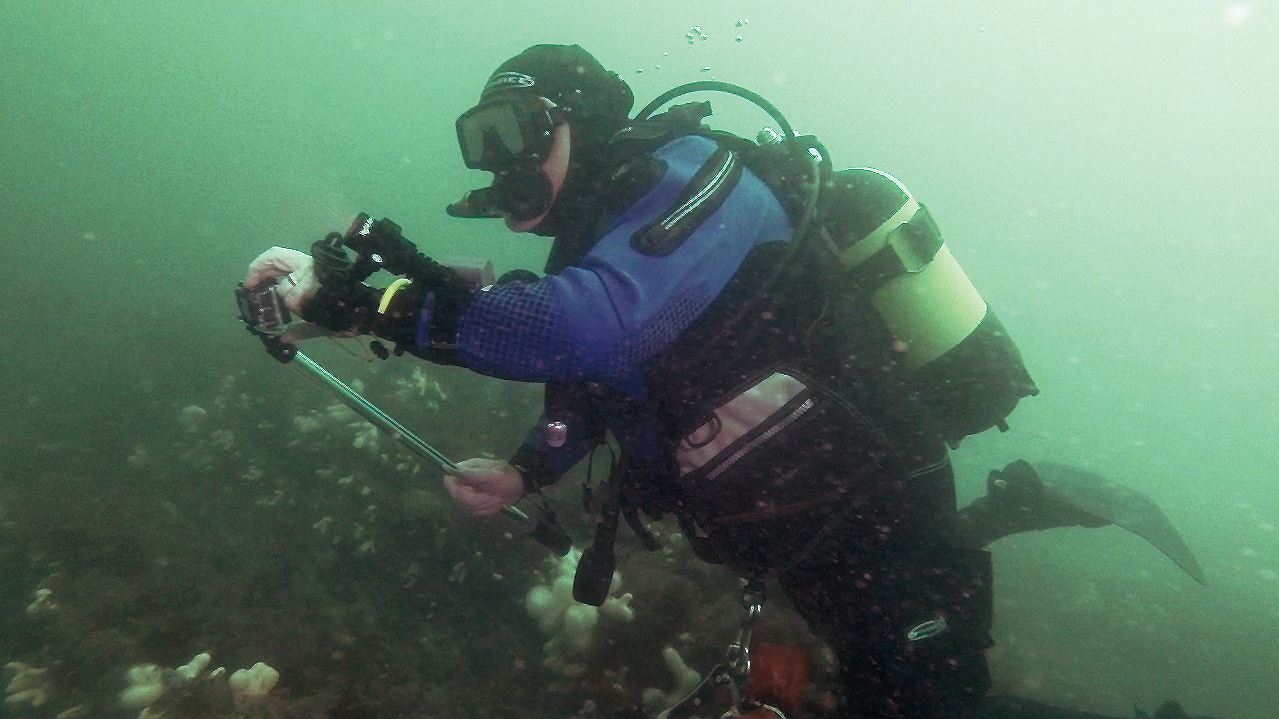Photo / Video News & Reviews
Make The Most Of Your GoPro
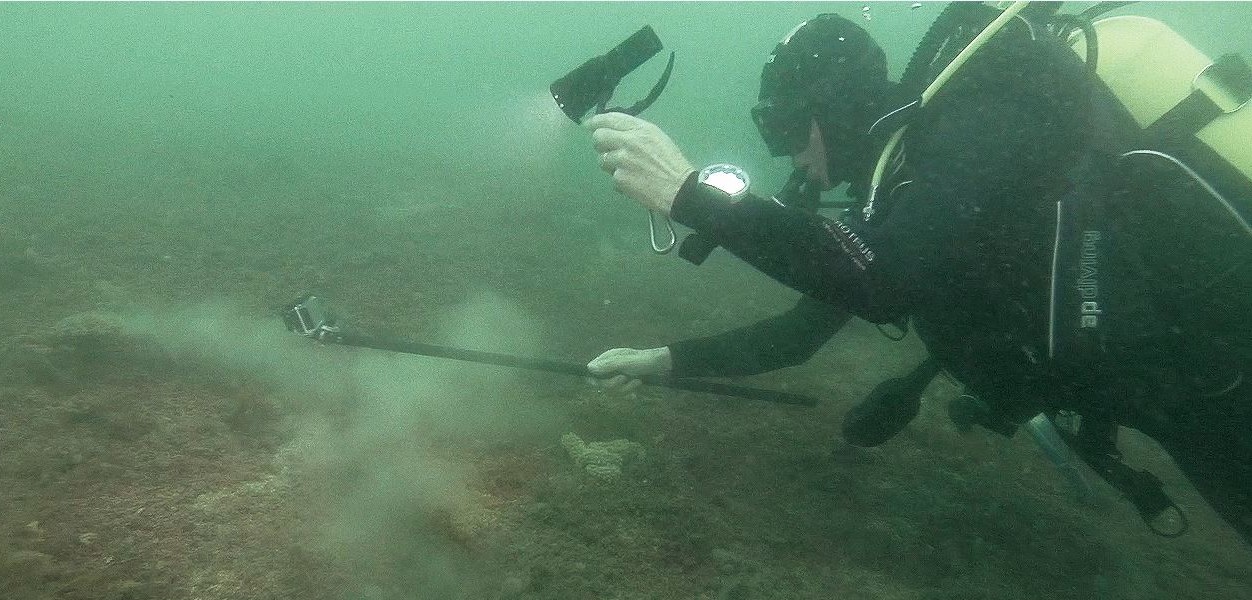
Jeff Goodman is not someone to shout about his achievements from the rooftops, in fact I can’t imagine him shouting at all. But beneath the serene, almost unnaturally calm exterior, there lies a spirit of adventure that has seen him spend over 30 years travelling and filming on every continent, much of the time beneath the water. He has won many awards, been twice nominated for a BAFTA, and worked with everybody worth knowing in the business. He never name drops though, with one notable exception. He becomes uncharacteristically excited when recalling his filming exploits with his childhood hero, John Craven!
I first met Jeff a couple of years ago on a local dive trip, a time which coincided with the meteoric rise of the GoPro camera. Originally developed to film its inventor’s surfing exploits, this amazing piece of kit has now been used to capture thousands of hours of adventure footage and all in a package no larger than a match box. So when I discovered that Jeff was running GoPro filming and editing courses here in Cornwall, it would have been rude not to sign up.
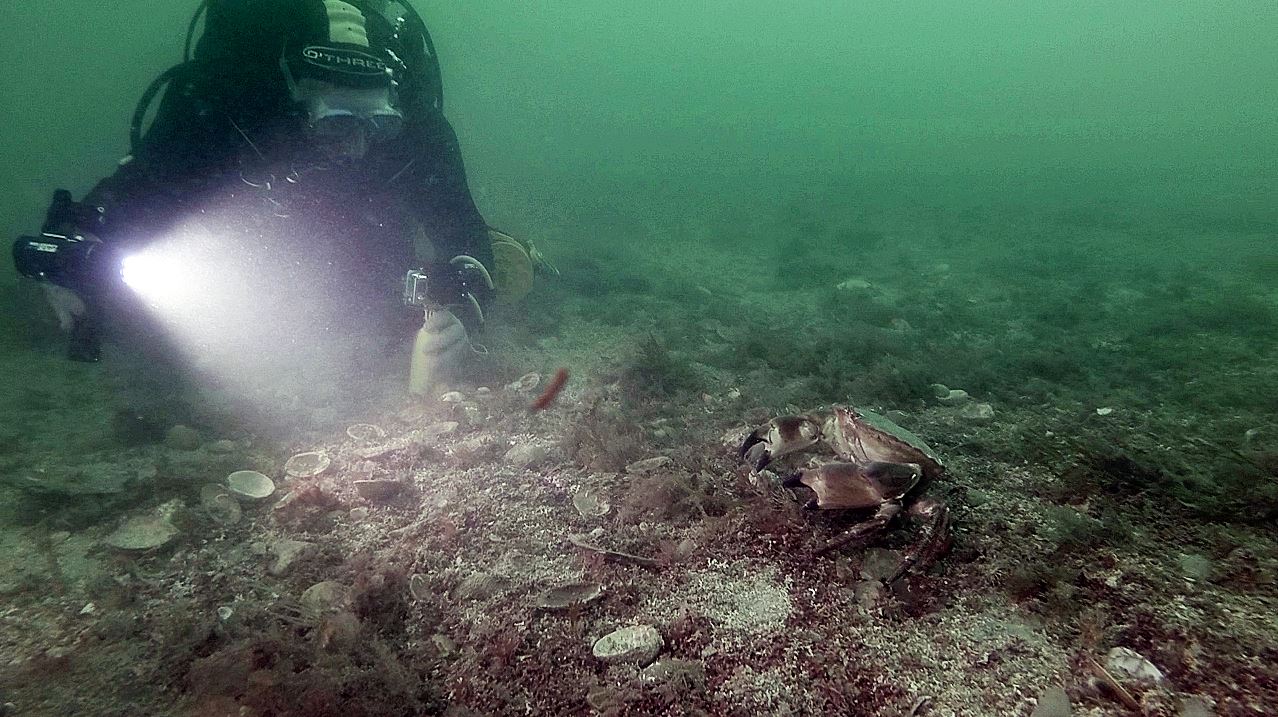
A hot Saturday morning found us meeting at the Atlantic Scuba dive centre near Falmouth, where Jeff bases his UK courses. We were joined by fellow participant Nic Weeks of Holborn BSAC. This was the introductory weekend course but, as we soon discovered, it’s far more than a taster session. We were soon chatting about long, mid and close up shots, and how to alter the settings on the camera to achieve optimum results. That was the first epiphany: small it may be, but the GoPro is far more than a point and shoot camera. With the ever-tactful Jeff gently pointing out that knowing how your camera works is rather important, we eagerly gathered our kit together, and headed to Mylor to board the dive centre’s spacious RIB, Stingray, for the first dive.
Dive 1: The Outer Bizzies Reef.
This dive was originally to be in the East Narrows, closer to Falmouth, but a yacht race directly over the site forced a rethink. So we rounded St Anthony’s Head and were soon over the reef. We dropped into about 20 metres onto a series of rock pinnacles and sandy gullies, well stocked with invertebrate and fish life. We had no concrete plan other than to do some filming of whatever we could find. And with that came the first increase in the gradient of the learning curve. Video is dynamic, so simply filming a stationary urchin is unlikely to secure you a contract with the Discovery Channel or the BBC. Nic and I were also surprised to discover that when our footage was reviewed, neither of us had a single shot that lasted more than three seconds. Patience, it seems, was a virtue that we would both need to work on.
Dive 2: The Andromeda.
This four masted barque has long been a favourite wreck of mine. It’s shallow, colourful, easy to get to and a joy to film. We were briefed to include some of the structure of the wreck to frame divers or fish. The visibility was uncharacteristically poor for this site at around five metres, and the kelp had certainly reached its full Summer growth, but there was still ample scope for filming. We experimented with lighting and perspective and whilst I can’t honestly claim to have been ready to jump on the next flight to Hollywood at that point, I did at least manage to take one or two of the shots that I intended, rather than relying on good luck or panic to attempt a sequence. We could now identify a subject which might be worth filming. Next we needed to know how to film it.
This was another site which I know well, having spent many dives trying to locate an elusive wreck in the area. Our task was more specific, namely to film a sequence featuring long, mid and close up shots of a diver, as well as a POV (point of view) shot to illustrate what they were looking at. It sounds straightforward, but this was the point at which Jeff wanted us to move up a notch in terms of the quality of our work. Unfortunately this was also the point when I realised why blind photographers are something of a rarity, as I mistook the stills icon (a tiny red blob according to my eyesight) with the video icon (another tiny red blob) with the result that I presented Jeff with 300 still shots of his legs. As always, he was the very epitome of diplomacy, but I could tell that my avant garde approach to film making was unlikely to earn me as many BAFTA nominations as Jeff had received. Another lesson was learnt too, as a seal and a barrel jellyfish popped up next to the boat just as we had de-kitted. Wildlife will never miss the opportunity to taunt you without mercy if it knows you have no camera. As you will see, that particular lesson was to be reinforced on the next dive.
Dive 4: the East Narrows.
With much lighter boat traffic than the previous day, we headed back to this site, which is a sloping bank on the eastern side of the shipping channel into Falmouth. The pressure was really on here. As the person supposedly with local knowledge (never admit to this) I was chosen to pick a specific subject to film. This site is normally a good spot to see various species of Ray so that was my suggestion. Jeff took us through the sequence of shots which would work best with this animal. The seabed is unusual in that it is composed of fragments of maerl, or calcified sea weed. We drifted North in the light flood tide until Jeff spotted a beautiful Thornback Ray, and we gingerly gathered round to film it. I switched my camera on and… nothing happened. I tried again, still nothing. It had gone into sulk mode. One of my regular buddies, Paul Freeman, who had been watching us film, felt my pain, as he had lost his stills camera on the previous dive! So with Jeff and Nic having the only working cameras, Paul and I headed further North to cut our losses by practicing our skills at locating wildlife. Need I tell you what happened next? The wildlife, sensing our inability to immortalise it on film, began to show up in droves. We counted twenty Rays, both Thornback and Blonde, and a stationary John Dory which didn’t move an inch, no matter how closely we approached. Two other divers on the boat told us that they had witnessed the amazingly rare spectacle of a huge Bull Huss giving birth in a small cave! Of course they didn’t have a camera either.
When we returned to the dive centre, the mystery of my malfunctioning camera was humiliatingly solved by Jeff, who discovered that during the surface interval I had changed batteries and put the new one in upside down. I was utterly mortified. Having sorted out that little problem, we looked more at editing techniques, and software choices available, as well as discussing continuity issues and how to overcome them (the fish will do it for you if you ask nicely). We concluded with some valuable information about the use of music and narration in our soundtrack.
All too soon the course was over and my head was reeling with all the new information which had been stuffed into it. If this much knowledge had been imparted during a weekend course, I can only imagine how much more one could learn during a week’s tuition. Even now, several days later, I find myself framing shots and contemplating composition as I stroll along the sauces, pickles and condiments aisle of my local Sainsbury’s. And my GoPro camera, up until then, an accessory on a dive, had been elevated to the actual purpose of the dive.
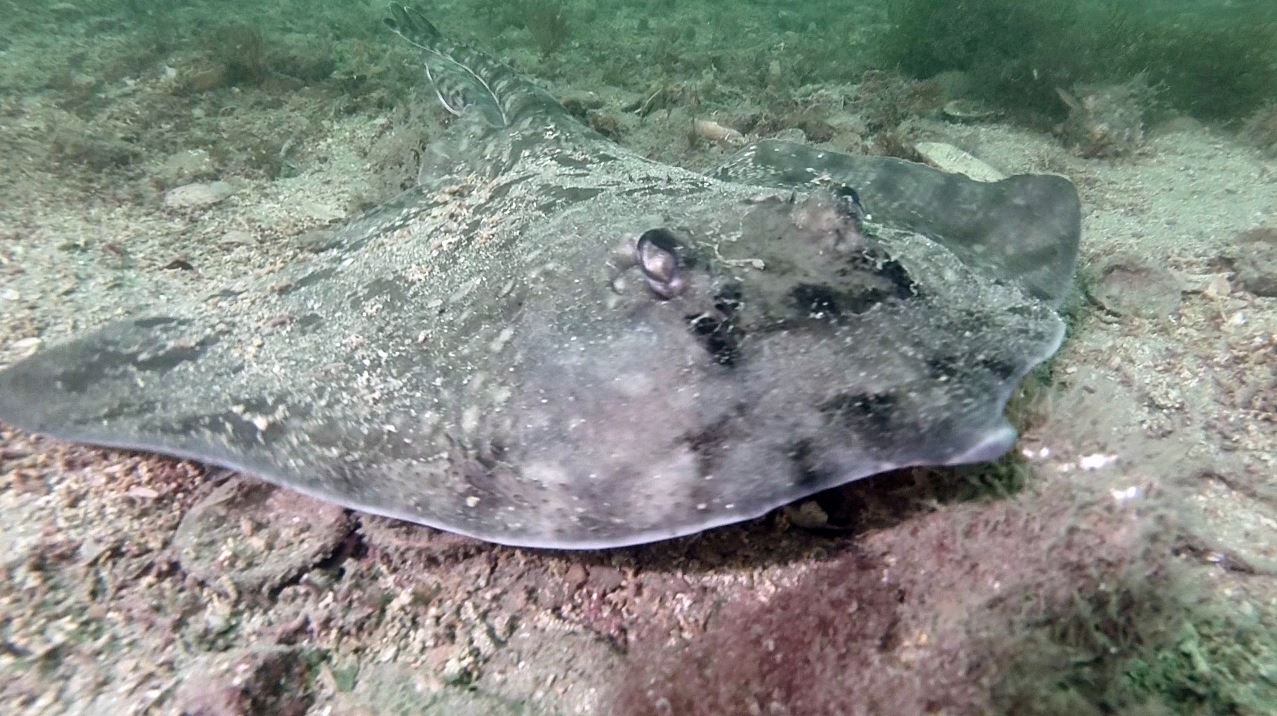
Jeff Goodman runs a variety of courses based not only in Cornwall, but also in Portugal and the Red Sea. Whilst the warm water courses were very tempting, I found the appeal of getting to grips with filming our own wildlife and its environment much more challenging and enjoyable. It was a real pleasure not only to learn so much about the GoPro camera, but also to witness the deep respect that Jeff has for the sea and its inhabitants.
So when my friends ask if I have any plans for the forthcoming week, I can casually announce that I’m doing a spot of filming with Jeff Goodman without being accused of name dropping, because given my inability to read my camera’s screen, or insert the battery correctly, I feel confident that he’s already been talking about me.
Course information and booking: www.jeffgoodman.co.uk
Atlantic Scuba/Stingray Charters: www.atlanticscuba.co.uk
1. The GoPro can be a point and shoot camera but it can do so much more. Learn how to set it up correctly for the best results.
2. If your GoPro doesn’t have a screen, you will struggle to get decent results. The back screen is a must have feature.
3. Hollywood may be beckoning but you are still a diver. Don’t let filming distract you from monitoring you and your buddy.
4. Have a shooting plan in your head, it will make editing much easier later. Having said that, stop filming a blenny if a basking shark turns up unexpectedly.
5. Know how your chosen subject characteristically behaves. Successful wildlife filming comes, in part, from predicting what the animal will do next.
Find out more about Nick at his website: www.nicklyon.co.uk
Blogs
Jeff Goodman Launches Underwater Moviemaker Course with NovoScuba

Transform Your Dive Experiences into Cinematic Masterpieces
NovoScuba has partnered with acclaimed underwater filmmaker Jeff Goodman to introduce the Underwater Moviemaker Course—a revolutionary program designed to equip divers with the skills to capture the breathtaking beauty of the underwater world.
Whether you’re an aspiring filmmaker, an avid diver, or a photography enthusiast, this course offers the tools and expertise needed to create stunning underwater videos. From vibrant coral reefs to curious marine life, you’ll learn how to film, edit, and produce captivating underwater stories, all with expert guidance from a seasoned professional.
Jeff Goodman: A Legacy in Underwater Filmmaking
Jeff Goodman brings over 40 years of experience in underwater film production for television to this course. Reflecting on his career, Jeff said:
“Although technology has dramatically changed, the basics of underwater filming remain constant. This course covers crucial skills for producing great videos. Whether you’re creating professional broadcast films or high-quality hobby videos, the fundamental principles are the same.
A camera operator must master their equipment to capture those magical underwater moments effortlessly. But beyond technical know-how, underwater filmmaking is about having fun and enhancing your diving experiences. So, take your time, learn at your own pace, and enjoy this creative journey.”
About NovoScuba
Founded in 2023, NovoScuba is reshaping dive education with a comprehensive, digitally native platform. Offering cutting-edge training programs for divers at all levels, NovoScuba sets a new benchmark in the diving industry by combining innovation with accessibility.
With ISO-certified courses, a student subscription model, and multilingual support, NovoScuba ensures that dive education is inclusive and engaging. More than just a training provider, NovoScuba fosters a global community of divers committed to exploration, collaboration, and sustainability.
Join the NovoScuba Underwater Moviemaker Course Today!
Dive into the world of underwater filmmaking and start creating cinematic stories that inspire. Learn more about the course and enroll today at www.novoscuba.com/novoscuba-underwater-moviemaker-course.
EXCLUSIVE: Jeff Goodman interviews Mark Spiers, CEO of New Scuba Diving Training Agency NovoScuba
NovoScuba’s Game-Changing Approach for Dive Store Owners: WE PAY YOU!
The diving world thrives on passion and adventure, but for many dive store owners, the financial and operational challenges can be as deep as the ocean.
NovoScuba, an emerging force in the diving world, is on a mission to transform this landscape for the better. With a revolutionary approach to dive store and training agency partnerships, NovoScuba is setting new standards for how dive stores can thrive while keeping their focus on delivering exceptional diving experiences.

A New Paradigm: NovoScuba’s Bold Mission
NovoScuba’s mission is straightforward yet profound: to disrupt the traditional dynamics between dive store owners and training agencies. Traditionally, dive stores have been subjected to substantial fees charged by training agencies, for membership, materials and certifications. These costs have often placed a heavy financial burden on store owners, cutting into their profits and limiting their ability to offer competitive prices to customers.
NovoScuba flips the script by offering a model where dive stores earn money, instead of paying high fees. Dive stores receive commissions for every student they register, and their certification costs are covered. This new model not only boosts profitability but also ensures clients get top-quality training at unbeatable prices.
Financial Upsides: Earn From Student Registration
NovoScuba’s approach is simple yet revolutionary. Dive stores partnering with NovoScuba can earn commissions for every student they enroll.
Here’s how it works: For every student enrolled through NovoScuba, dive stores receive a commission. Each student enrolled will receive their e-learning materials and certification credit included in their subscription. This arrangement is a significant departure from the traditional model, where dive stores often struggle to manage high overhead costs related to training fees and certification expenses.

NovoScuba’s approach ensures that dive stores can focus on what they do best—providing top-notch diving experiences—without being bogged down by excessive financial burdens, and the need to carry large stocks of materials.
Quality Training at a Great Price
NovoScuba stands out by offering high-quality, ISO certified, training that doesn’t break the bank, in fact our students will pay less than with most competing agencies. Clients benefit from top-notch education and safety standards at competitive prices. Dive store owners can confidently promote NovoScuba’s programs, knowing they’re offering fantastic training at affordable rates. This balance of quality and affordability helps dive stores build a strong reputation and attract more customers.
Your Brand is Your Business: NovoScuba’s Commitment to Showcasing Your Identity
At NovoScuba, we understand that your brand is your most valuable asset, and we’re committed to putting it front and centre. Unlike agencies that charge high fees to promote their own brand, we believe in investing in yours. With NovoScuba, you won’t be paying to advertise someone else’s logo alone, — our focus is on showcasing your unique identity. Certifications prominently feature your brand, as well as the training agency, reinforcing your store’s image and brand every step of the way. We’re here to support and elevate your brand, ensuring that your investment directly benefits your business.
Affordable Membership: An Investment in Your Success
NovoScuba’s membership model is designed with dive store owners in mind. Membership fees are kept low and include annual Pro member fees for your team. Payment can be made monthly or annually in your local currency, avoiding the hassle of exchange rate fluctuations. NovoScuba promises no exchange rate changes without a six-month notice, ensuring financial stability and simplifying budgeting. With a membership lasting 12 months from date of joining, you’ll enjoy a full year of NovoScuba’s benefits and support.

Streamlined Operations: Simplifying Your Workload
Handling administrative tasks can be a challenge, but NovoScuba makes it easier. We’ve streamlined certification procedures and reduced paperwork to help dive stores operate more efficiently. Certification processing is quick and straightforward, allowing more focus on teaching and customer service. Our system minimises bureaucracy by storing necessary forms in student profiles, reducing paperwork and administrative delays.
Crossover Made Easy
For dive stores looking to transition to NovoScuba’s model, the crossover process is designed to be smooth and hassle-free. NovoScuba provides support to ensure that the transition is as seamless as possible, helping dive store owners integrate into the new system with minimal disruption. Experienced dive Pros don’t need to undergo extensive retraining. Our crossover is designed to familiarise Pros with NovoScuba’s user-friendly platform, standards and course structures, and not to waste time and expense re-training in water.
With just a few simple steps, you’ll be ready to offer top-notch training through NovoScuba.
Comprehensive Business Support and Training Included in Your Membership
NovoScuba goes beyond financial benefits by offering experienced support and training. This value added service includes:
- Business Training: Optimise your operations with guidance on marketing, customer service, and best practices.
- Marketing and Promotion: Access resources to attract new customers and boost your store’s visibility. Enjoy cross promotions with NovoScuba to gain increased exposure.
- Ongoing Support: NovoScuba’s commitment to its partners extends beyond initial training and setup. The company offers ongoing support to address any issues or questions that arise. This continuous support ensures that dive store owners have a reliable resource to turn to whenever they need assistance.

Embracing Digital Natives: Instant Evolution and Continuous Improvement
NovoScuba’s digital-native approach is a game-changer. Leveraging cutting-edge technology, we ensure our services evolve and improve swiftly. Dive stores benefit from instant updates, the latest features, enhancements, and effective solutions, keeping them ahead of the curve. This continuous improvement helps dive stores stay competitive and deliver exceptional services. Whether it’s a new course update, additional marketing resources, or improved e-learning functions, NovoScuba’s digital infrastructure ensures that dive stores are always equipped with the most current and effective solutions. This continuous evolution not only helps dive stores stay ahead in a competitive market but also ensures they consistently provide top-quality services to their clients.
Why Is NovoScuba Doing This? – Fair Profit Sharing for Greater Access and Growth
At NovoScuba, we’ve taken a bold step by paying commissions to stores rather than following the traditional model of training agencies charging high fees. Our mission is to make diving accessible to everyone and to foster a growing community of new divers and continued education. By redistributing profits more equitably between stores and training agencies, we aim to create a more supportive and collaborative environment within the industry. We believe this approach not only helps individual stores thrive but also stimulates overall growth and innovation in diving. Our commitment to fair profit sharing reflects our dedication to the long-term health and expansion of the diving community.

Everyone is getting a piece of the pie.
Getting Started: Join the NovoScuba Revolution
Ready to revolutionise your dive store experience? NovoScuba is here to support your journey toward reduced costs, increased profitability, and enhanced operational efficiency. Get in touch with our team to learn how NovoScuba can transform your business.
For more information, email info@novoscuba.com or visit www.novoscuba.academy.
Blogs
The Benefits of Underwater Photography Workshops

Are you just getting started out in underwater photography or are you a seasoned shooter who wants to take their images to the next level? Whatever you experience or ability, here’s an overview of underwater photography workshops.
What is an Underwater Photography Workshop?
The first thing to note is that this is not ‘school’! There are no compulsory classes and at workshops you are free to pick and choose what you take part in, or otherwise.
A huge part of learning and developing your skills is through experimentation, trial and error, responding to feedback, and honing your technique. Underwater photography workshops provide you with the perfect platform for practice and improvement.
There is no better alternative to hands on experience in an environment that is 100% dedicated to your development. Reading informative articles and watching videos on YouTube can never replace the value of one on one time with your camera rig, underwater!
Underwater photography workshops are generally structured around core components, namely: presentations, underwater practice, feedback and critique sessions, troubleshooting/one-on-one sessions, and technical support.
Other components of a workshop include dining, relaxing, and time for socializing too!

What Topics do Underwater Photography Workshops Cover?
Depending on the pro, the type of workshop and regional diving highlights, a wide range of topics may be covered from composition and lighting through to shooting techniques and editing.
Benefits of an Underwater Photography Workshop
- Improve Your underwater photography
- Learn from professionals
- Learn from other participants
- Expand your photography knowledge and understanding
- Try put new techniques
- Learn how to maximize your camera rig
- Phenomenal travel opportunities
- Memorable experience and new friendships

Underwater Photography Workshops in the Lembeh Strait, Indonesia
When it comes to underwater photography workshops that focus on shooting macro, muck diving, and unusual marine species, there can be no better destination on the planet than the Lembeh Strait.
The Critter Capital of the World, a Muck Diving Mecca, and the Twilight Zone are just a few of the names that have been given to this stretch of water over the years due to its high density, and diversity, of rare and unusual marine life.
Some of Lembeh’s most iconic species include the hairy frogfish, Pontohi pygmy seahorse, the Lembeh sea dragon, Mandarin fish, Bobbit worms, Rhinopias scorpionfish, flamboyant cuttlefish, tiger and harlequin shrimps, ornate ghost pipefish, harlequin crabs, and where do we start with octopus? Here’s just a few… wunderpus, mimic, blue ring, hairy, long arm, starry night, and coconut… and the list goes on!
Dive conditions in the Lembeh Strait can be extremely favourable for underwater photographers. There is little to no current making both moving around and remaining stationary a breeze. The comfortably warm water temperatures reduce the cold that can also set in when not on the move.
Lembeh Resort and Underwater Photography Workshops
Lembeh Resort not only offers luxury accommodation in the Lembeh Strait but it is also offers a complete suite of facilities for underwater photographers and enthusiasts. Here is a ‘snapshot’ of the camera and imaging services that are on offer at Lembeh Resort – inside and outside of underwater photography workshops:
Photography Facilities
Lembeh Resort offers a suite of facilities for underwater photographers, including:
- The only Backscatter Authorized Photo Center in Asia
- Photo Center offering camera, housing, lights and accessory rentals and purchases, onsite repairs, onsite 3D printing of small components, professional support and assistance, full workshop support
- Full time onsite Photo Pro
- Full time onsite Marine Biologists
- Marine biology and underwater photography trained Dive Guides
- Spacious camera room with individual work spaces, lights, and power points
- Varied diving options including single dives in the Lembeh Strait, two or three tank dive trips, day trips to Bangka, east coast Lembeh trips, blackwater, bonfire, night, and Mandarin fish dives.

Capturing Critters in Lembeh Underwater Photography Workshop 2025
The renowned Capturing Critters in Lembeh Underwater Photography Workshop is back in January 2025 for the 12th year running!! This unique workshop is hosted by not one but three worldclass photo professionals. The 2025 workshop features: Ron Watkins (USA), Paul Duxfield (UK), and Renee Capozzola (USA). The week-long workshop promises to be packed with incredible diving, Pro presentations, and one-on-one instruction and feedback.
2025 Workshop Schedule and Dates:
- Pre-Workshop: January 8th ––10th (time to relax and unwind after traveling and enjoy some of Lembeh’s famous dive sites.)
- Workshop: January 11th – 17th (Capturing Critters in Lembeh 12th Annual Workshop)
- Workshop Extension: January 18th – 19th (Additional Day Workshop Extension)
- Post-Workshop: January 20th – 21st (Stay additional nights and enjoy extra diving days or some time to relax and explore more of North Sulawesi)
Find Out More:
Meet the pros and find out more about the Capturing Critters in Lembeh 2025 underwater photography workshop, including prices and workshop inclusions, here:
If you are ready to book your place on the January 2025 Capturing Critters in Lembeh Underwater Photography Workshop – contact Lembeh Resort at: reservations@LembehResort.com.
-

 News2 months ago
News2 months agoIconic SS United States to become the World’s Largest Artificial Reef
-

 News3 months ago
News3 months agoBook Review – 52 Assignments: Underwater Photography
-

 Gear News3 months ago
Gear News3 months agoDYNAMICNORD – New German diving brand enters the British market
-

 News3 months ago
News3 months agoExploring Cenote El Pit: A Diver’s Dream
-

 Gear News3 months ago
Gear News3 months agoTry BARE drysuits (and maybe even win one!) this Friday with Sea & Sea at North West Dive Fest
-

 Marine Life & Conservation3 months ago
Marine Life & Conservation3 months agoBook Review: Coral Triangle Cameos
-

 Blogs2 months ago
Blogs2 months agoDive the Egyptian Red Sea this Autumn with Regaldive
-

 News3 months ago
News3 months ago2024 Ocean Art Underwater Photo Competition Announced


